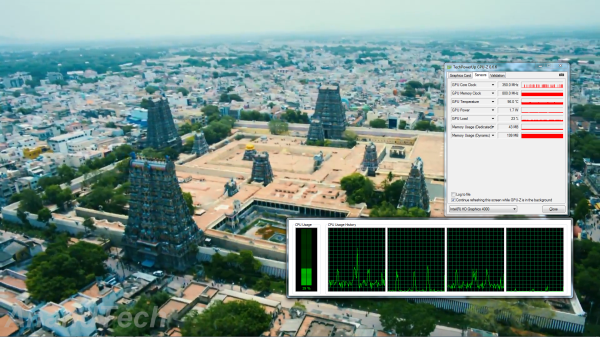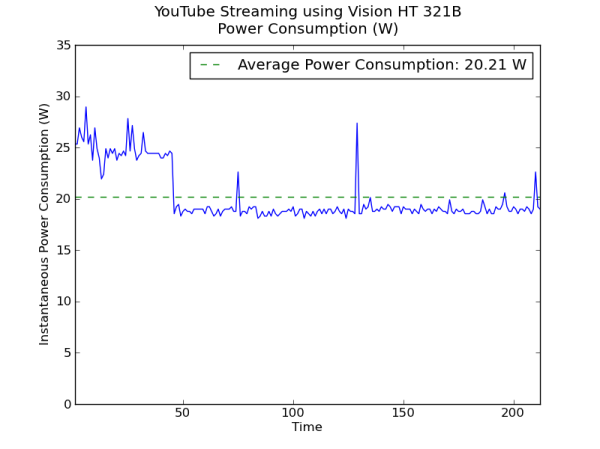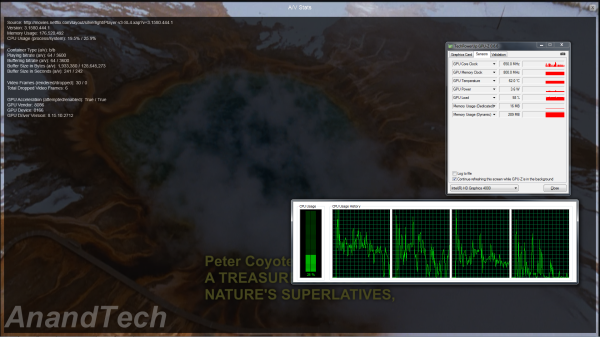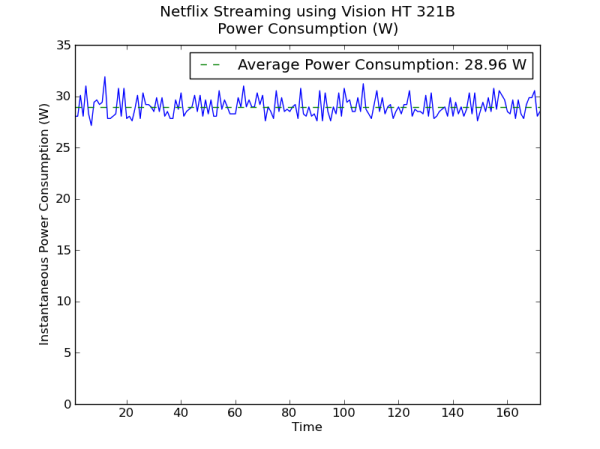ASRock Vision HT: Ivy Bridge Carries the SFF HTPC Forward
by Ganesh T S on November 12, 2012 3:30 PM EST- Posted in
- Home Theater
- ASRock
- HTPC
- Ivy Bridge
Networking Performance and Streaming Aspects
In this section, we will take a look at the networking capabilities of the unit and also our standard HTPC streaming tests (involving YouTube and Netflix). ASRock delivered dual-band Wi-Fi in the Vision HT 321B. The 5 GHz band is able to practically deliver more than double the throughput of the 2.4 GHz band when used with an appropriate router.
Dual Band Wi-Fi
We used Ixia's IxChariot to check the TCP throughput in the 2.4 and 5 GHz bands using Western Digital's MyNet N900 router with default settings. We tested at two locations, one right next to the router and the other across a wall, separated by around 30 ft. The gallery below shows the throughput graphs obtained. While the 2.4 GHz band is able to deliver around 65 Mbps real-world throughput, the 5 GHz band delivers around 160 Mbps.
Under these circumstances, it becomes possible to even stream uncompressed Blu-ray rips over the wireless network. Unlike 2.4 GHz, the 5 GHz band is not prone to interference. However, the range is smaller.
YouTube and Netflix Streaming
The drivers for the Intel HD 4000 enable hardware accelerated decode and rendering for both YouTube and Netflix streams in Flash and Silverlight respectively. Screenshots of our standard test streams in action are provided below. In addition, we are also providing power consumption graphs over time for the full YouTube clip and a segment of the Netflix clip.
Adobe Flash Hardware Acceleration (YouTube)
The power consumption graph for the YouTube clip above shows that the unit consumes more power in the beginning as the video is streamed over the Wi-Fi network, but, later, settles down to a lower value corresponding to the decode and rendering steps.
Hardware Acceleration for Netflix in Microsoft Silverlight
Unlike YouTube, Netflix doesn't seem to buffer the full movie during playback on a PC. After filling up a pre-determined buffer size, the download rate seems to throttle down to maintain it. The power consumption graph shows the unit's characteristics during playback with simultaneous download over Wi-Fi.


















40 Comments
View All Comments
duploxxx - Tuesday, November 13, 2012 - link
very easy just use a low end Liano based or trinity based platform.enough performance , power consumption controllable and low cost
GotThumbs - Tuesday, November 13, 2012 - link
If you haven't already, Take a look at Zotecs (Zotac ZBOX ZBOXNANO-AD12-U AMD A68M ) using the AMD E2-1800 APU 1.7GHz Dual-Core. $229.00 Bare-bone or 299. with 2 Gigs and 320 HD (5400).http://www.newegg.com/Product/Product.aspx?Item=N8...
Zotac has had these form factors out for around 2 years, so Intels NUC is nothing new and yet is still over priced IMO.
Knowledge is power.
It would be nice if Anandtech did an in-depth review/comparison of the NUC and Zotacs offerings.
ssj3gohan - Tuesday, November 13, 2012 - link
It's very simple: Intel forbids them to use anything but mobile platforms. And mobile=really expensive (even though it's the same silicon). There are perfectly fine desktop processors that will fit inside those enclosures, well within the thermal limits. Intel's newest i3-3225 only uses about 30W full blast in actual use, scratching 45W under the most demanding synthetic load. The rest of the desktop platform is already super-efficient and doesn't contribute particularly much. And even though it outperforms any mobile processor, it costs only $130 vs $370ish for the cheapest hd 4000-outfitted mobile processor.So it's perfectly easy to make a much cheaper, better performing SFF PC, but Intel forbids it. Because that's good for the world.
nathanddrews - Tuesday, November 13, 2012 - link
Just buy an Ivy Bridge notebook on Black Friday for $300. Plenty of power for HTPC --> 1080p everything. HD4000 can play some games. Close the lid, connect and HDMI cable and you're done.Aikouka - Monday, November 12, 2012 - link
I considered purchasing this unit before, but I'm very picky about noise. It's not only noise when the unit is being used, but also how noisy is it when the room is quiet? I poked through this article, and unless I missed it, I don't see anything on noise characteristics for this unit.I ended up building a HTPC using the Streacom fan-less chassis instead of buying one of these. Let me tell you, if you want a build that's a bit of a PITA, go with that case. =P
ganeshts - Monday, November 12, 2012 - link
The thermal design / noise factor is covered in the final section. The solution is very similar to what we had in the previous generation HTPCs, and ASRock had tests with video proof to show less than 35 dB noise under full loading conditions.I have been keeping my eyes open for information / samples of Streacom's recently introduced FC10 chassis. We might see a piece on that if Streacom is able to get it into production anytime soon :)
capeconsultant - Monday, November 12, 2012 - link
A machine such as this should always include noise info. Not a reference to another machine's noise. It is a CRITICAL issue for a machine of this size whether used for HTPC or not. I will still be getting the mac mini. Keep trying.mikael.skytter - Tuesday, November 13, 2012 - link
I bought the unit this August and I am also picky about noise.As far as I am concerned this unit is really good. I have disabled the Blue Ray player and installed an SSD instead of the HDD.
The unit is completely silent unless you put your ear less then 10cm from it in a quiet room. My tv accually sounds more (Samsung Series 8 with fans).
When playing standard MKV 1080p files over the network, the unit does not increase the fanspeed but instead stays quitet.
I hope this help and I know it´s not numbers. But I am really picky about my units. It needs to be quiet and the Asrock does just that
cjs150 - Tuesday, November 13, 2012 - link
Ganeshts: for an HTPC review you must cover noise. You have to cover the noise in 3 situations, idle, full workload and (critically) playing a movie from the included Bluray player - if the machine is quiet but the bluray player noisy (vibration usually) then as an HTPC this would be an epic fail. This is one of my complaints about HTPC cases, they never include any vibration dampening for the optical driveI do not regard 35db as quiet, what it means is that in quiet sections of the movie I am hearing the computer which is not good enough.
There are some odd design choices here, although some may be forced on ASRock due to motherboard limitations. MSata or an SSD would be better than mechanical disk. Personally I would prefer better quality memory and more of it.
Then there is the issue of frame rates. This is not ASRock's fault but Intel's and is completely unforgiveable. I would really like you to get an interview with Intel and ask them to explain why, given that the frame rate standards has remained fixed for years, can they still not get it right.
Finally I would really like to see a review by you using Windows 8 as the OS for an HTPC. I am trying it on my HTPC and hate it (when Linux gets blu ray playback I am switching) but would love a second opinion to confirm whether I am just old fashioned or not!
Kevin G - Monday, November 12, 2012 - link
I see a little bit of comparison at the end to the Mac Mini but it'd be nice to have it represented in the performance charts for full comparison. Then again with just updating the line up, there could have been a bit of a time crunch.